
In the last tutorial I covered how to make an isomeric grid and build simple blocky shapes on it. In this tutorial I’m going to talk about another method of creating isometric shapes that doesn’t require a grid and is much more useful if your objects are complex or curvy.
When creating a complicated isometric illustration it’s best to begin by breaking down your object into its simplest parts. This will help to make the project more approachable. It is possible to make the most complex objects entirely on an isometric grid using the method I discussed in the last tutorial. There is another method that is much more useful for creating curvy or complex isometric objects in Adobe Illustrator. I’m going to call this method scale, shear, rotate or SSR.
The basic idea behind the SSR method is by using tools in adobe illustrator you can place an object onto an isometric plane without using a grid. This method is most useful for curvy or complex objects but it will work for anything. I’ll begin simply by making an isometric cube.
SSR Method
Step 1
Create a 4” square with your rectangle tool.
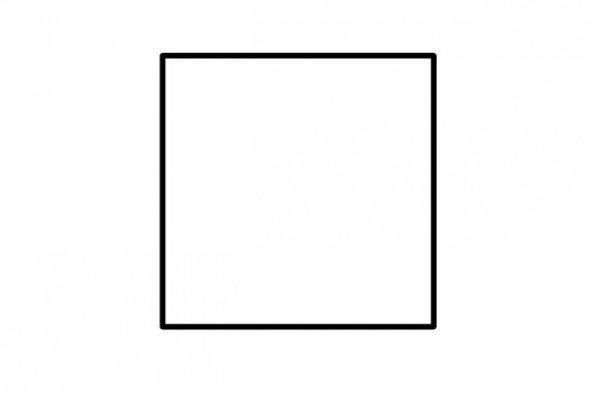
Step 2
With the square selected double click on your scale tool. Scale the square 86.602% vertically.
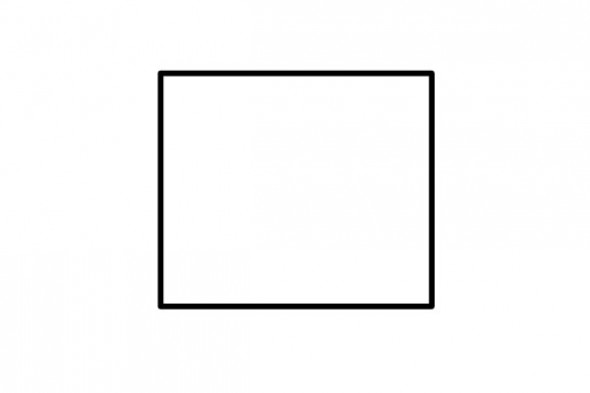
Step 3
With your object selected double click on the shear tool and shear the object 30°.
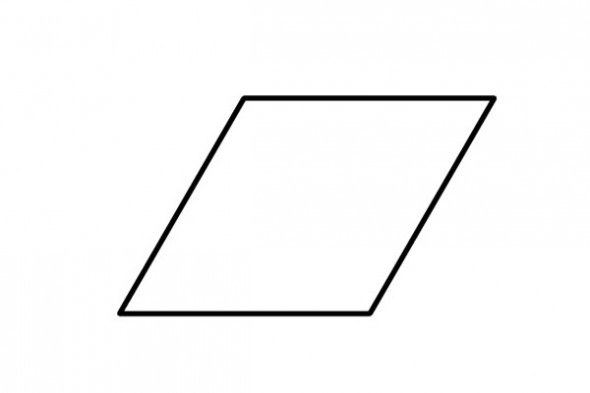
Step 4
With the object selected double click on the rotate tool and rotate -30°. You have now created the top of your cube.
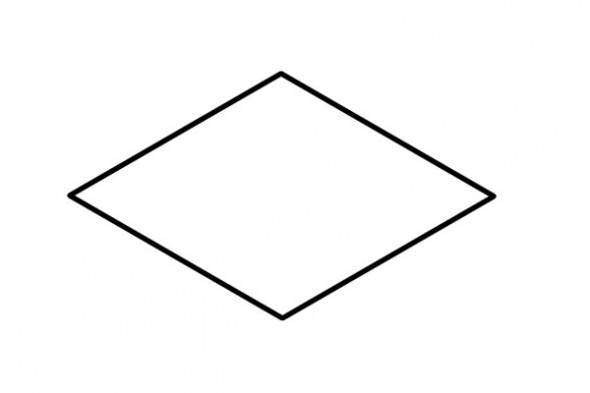
Step 5
To create the left side of the cube, begin with a 4” square.
Scale vertically 86.602%
Shear -30°
Rotate -30°
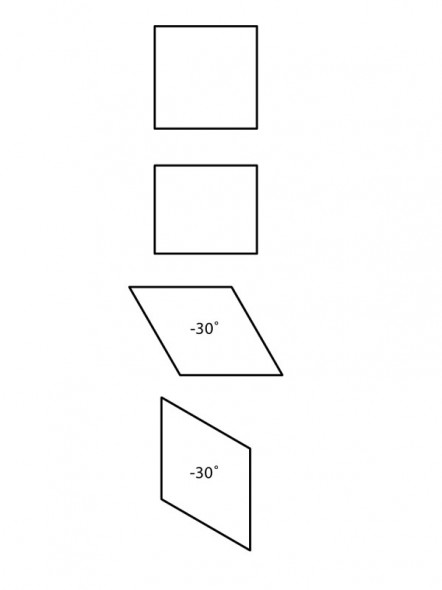
Step6
Use the selection tool (black arrow) to line up the front corner with the top of the cube.
Step 7
To create the right side of the cube, begin with a 4” square.
Scale vertically 86.602%
Shear 30°
Rotate 30°
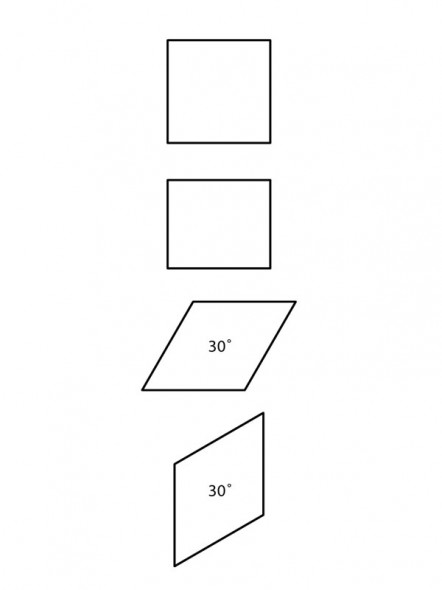
And move into place with your selection tool. You have now created an isometric cube without using a grid.

The power of this method becomes apparent when you try to create an object that would be very difficult to construct on a grid. This method only works if you have a set of orthographics to work with.
For this example I’m going to build the body of a Fender Stratocaster. To make this complex shape in isometric using only a grid would be a challenge. The complex compound curves would be very difficult to recreate accurately.
Drawing a Stratocaster
Step 1
There are many ways to make a set of orthographics depending on your object. You can look online for a set of blue prints, you could trace a photo, and if you own the object you could take it apart and measure it. Use whatever method works best for your project.
One quick Google search and I’ve found the perfect set of factory blueprints of the ’62 vintage re-issue Fender Stratocaster. These blueprints are much more detailed then I need but you can be as precise as you’d like for your own projects. Having too much information about your object is never a bad thing.
Step 2
Trace your blueprints. I’m going to trace just the information I need to complete my isometric, and I’m going to simplify parts of the design.
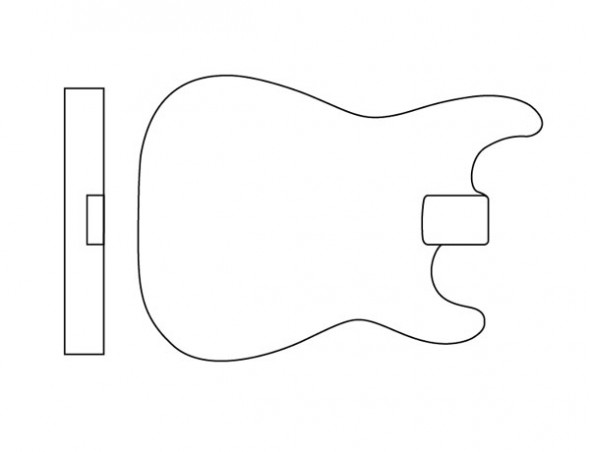
Step 3
Once you’ve chosen your orientation you can S,S,R, your bottom plane.




You can check your work by comparing any edges that in the orthographic are 90° or 180°. These edges will now fall onto an isometric grid; they will either be on the 30° or 150°.

Step 4
Now that you’ve created your base you have something to work off of. By taking the side view of the orthographic and S,S,Ring it onto the Isometric plane you can figure out the thickness of the guitar body.

Step 5
Line up the bottom edge of the guitar body with the corner of the orthographic side view.

Step 6
Next you want to copy the outline of the guitar body and move it up to the top edge of the side view. To do this use your selection tool and click and drag on the edge of the outline, before letting go, engage the Option button to make a copy, AND the Shift key to constrain the movement. Holding the shift key while moving the shape will ensure it stays lined up with the original.

Step 8
Using the side view you can mark off how deep the neck cutaway goes into the body. You now have three planes, the top, bottom and depth of the cutaway.


Step 9
The next step is to use the scissors tool to cut away all the excess lines you don’t need anymore. This is often the hardest part for an artist new to technical drawing. All the overlapping lines and shapes can be overwhelming. But if you take your time and start with the clear big shapes it will help to clean up the more complex areas.

Step 10
After clearing away all the line you don’t need anymore connect your corners and finish the shapes.

Add some line quality and you’re finished.

Conclusion
You have now finished the body of the guitar. You could continue on and complete the entire guitar, the exact same steps would apply for each part. This is an example of an exploded isometric of a Stratocaster I did a few years ago with this method.
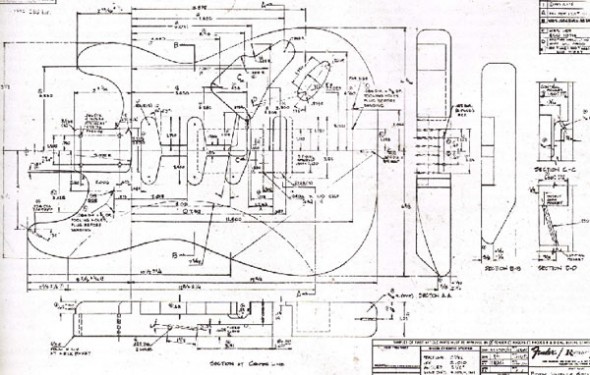
This is more or less the method I use. I made an Action Set from the three-step SSR procedure for Top, Front and Side.
Smart Guides (CMD-U) and setting Constrain Angle (CMD-K) to 30° or -30° makes aligning faces quick and easy (though this was easier in Illustrator CS3 than CS4)
Turn these into Adobe actions or CorelDRAW scripts and you have yourself a pretty powerful and time saving set of tools.
http://picasaweb.google.com/lh/photo/XN33yF16jw6G4yaIr0ASww?feat=directlink
Awesome – I don’t know a thing about illustration but have always loved these sorts of things. Maybe I’ll open up Illustrator and give it a shot.
Hi James,
I was wondering is there a calculation/formula for using this S.S.R. method to allow you to draw at different angles?
For example, how did the scale value of 86.602 come about?
How come in Kevin Hulsey’s Isometric tutorial he does not mention the 86.602% horizontal scaling? According to him all you need is both left and side views and the top plan view – all to scale.
http://www.khulsey.com/isometric-drawing-orthographic-projection.html
So if you were to do a cube in this method, one would assume all three views are the same size. However, if proceeding with his method the planes do not even up. So either I am missing something or doing something wrong.
@Grant, Matt
To see why the Scale step is necessary, try making a 1″ isometric cube without that step. If you measure the lines, you’ll find the Shear and Rotate steps introduce some distortion which the Scale step corrects for.
Hey, the links to the images seem to be broken! Care to fix it? Cheers, and what an awesome website!